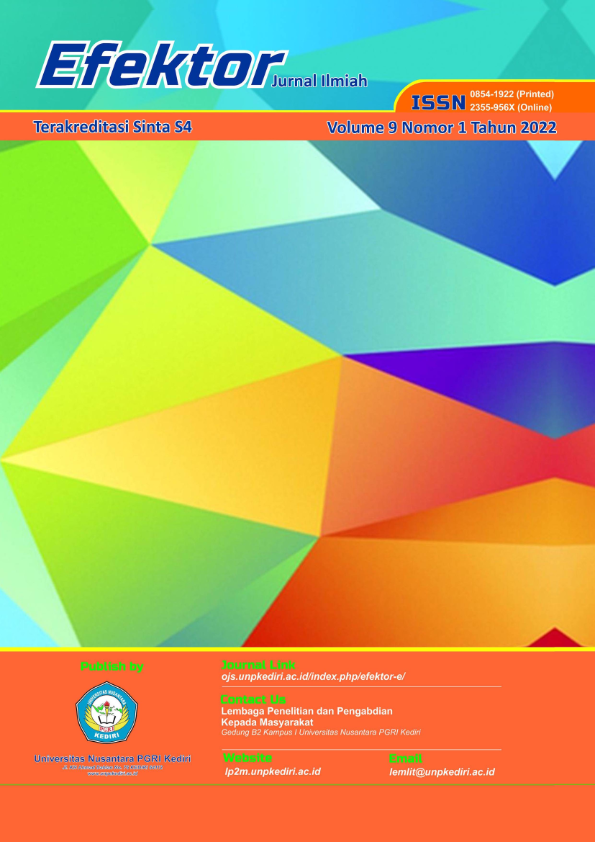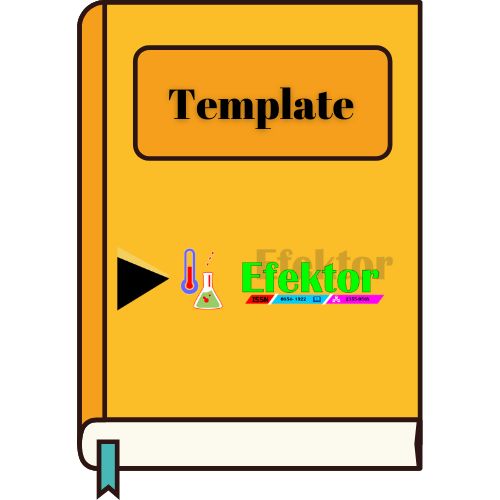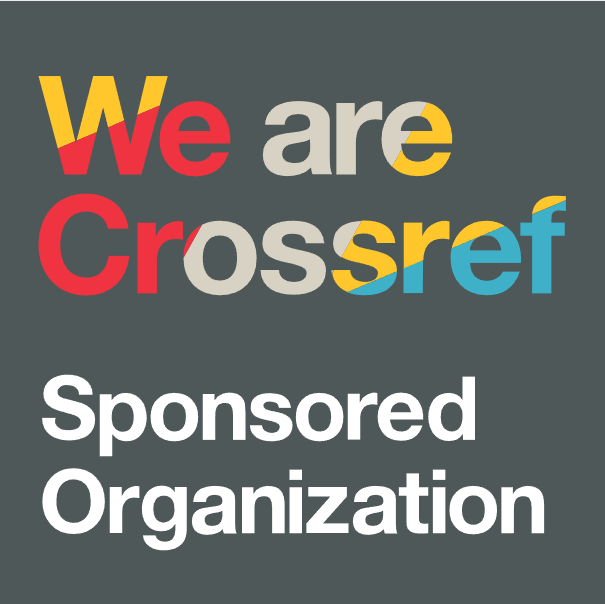Covidku Amati-Tuliskan-Kampeyakan Dalam Pembelajaran PPKN Pada Masa Pandemi Siswa Kelas 4 SD Negeri Bawang 3 Kota Kediri
DOI:
https://doi.org/10.29407/e.v9i1.16570Keywords:
learning media, covid-19 pandemic, sd bawang 3Abstract
This study aims to produce technology-based PPKn learning media innovations, especially Powerpoint media for SDN Bawang 3 students in Kediri. This research also seeks to increase students’ interest and motivation to learn, improve learning outcomes, and instill independent character. PowerPoint media innovation has three working mechanisms: observe, write, and campaign. The learning media innovation development model used in this study is the Lee & Owens model. The Lee & Owens model steps start from the stages of problem analysis, planning, development, implementation, and evaluation. The results of this study can increase students' motivation, activeness in learning and make learning more meaningful so that students can apply it in everyday life and train students' courage; this is proven by students being able to campaign for ways to save energy in everyday life in the form of videos.
References
AAsyhar, Rayandra. (2012). Media Pembelajaran Sekolah Dasar. Jakarta: FKIP Universitas Jambi.
Andita, Resi., dkk. (2018). Studi Deskriptif Permasalahan Pembelajaran PKn dalam Membentuk Karakter Siswa Kelas V SD 12 Kota Bengkulu. Jurnal Pendidikan Guru Sekolah Dasar, Vol 1 No. 1 Hal. 25-33.
Dahar, R. W. (2018). Teori-teori Belajar dan Pembelajaran. Jakarta: PT. Gelora Aksara Pratama.
Darmawan, Deni. (2012). Inovasi Pendidikan. Bandung: Remaja Rosdakarya.
Daryanto. (2016). Media Pembelajaran. Bandung: Satu Nusa. .
Lailiyah, N., & Wulansari, W. (2016). Peningkatan Keterampilan Berbicara Melalui Metode Diskusi Kelompok Model Tanam Paksa Siswa Kelas X Pemasaran 1 SMK PGRI 2 Kediri. JP (Jurnal Pendidikan): Teori Dan Praktik, 1(2), 166-173.
Lee, W. W. & Owens. (2004). Multimedia-Based Instructional, Design Computer-Based Training Computer-Based Training, Web Based Training, Distance Broadcast Training, Performance-Based Solution. Sanfransisco: Pfeiffer.
Mulyasa, E. 2015. Menjadi Guru Profesional. Bandung: Remaja Rosdakarya.
Nusarastruya, YH. (2013) Permasalahan dan Tantangan Guru PKn Menghadapi Perubahan Kurikulum (2013). Jurnal Satya Widya, Vol 29, No. 1, Hal. 23-29.
Prasetyo, Giri dan Prasojo, LD. (2016) Pengembangan Adobe Flash pada Pembelajaran Tematik-Integratif Berbasis Scientific Approach Subtema Indahnya Peninggalan Sejarah. Jurnal Prima Edukasia, Vol. 4, No. 1, Hal. 54-66.
Ramansyah, W. (2014). Pengembangan Multimedia Pembelajaran Interaktif Berbasis Adobe Flash Cs3 pada Kelas 1 SDN Bancaran 3 Bangkalan. Edutic - Scientific Journal of Informatics Education, 1(1), 1–11.
Sintya, YR., dkk. (2020). Pengembangan Multimedia Interaktif pada Pembelajaran Tematik Kelas V Sekolah Dasar. Jurnal Pendidikan: Vol 5, No. 8, Hal. 1105-1114.
Tarigan, Ema NBr & Arief, Ardian. (2021). Analisis Pembelajaran Jarak Jauh Berbasis Internet pada Masa Pandemi Covid-19 di SD Negeri Widoro Yogyakarta. Trihayu: Jurnal Pendidikan Ke-SD-an, Vol. 7, No. 3, Hlm. 1168-1173.
Wijayanti, Widya & Relmasira, SC. (2019). Pengembangan Media Powerpoint IPA untuk Siswa Kelas IV SD Negeri Samirono. Jurnal Penelitian dan Pengembangan Pendidikan. Vo. 3 No. 2, Hal. 77-83.
Yuniasih, Nury. Dkk., (2018). Pengembangan Media Interaktif Berbasis Ispring Materi Sistem Pencernaan Manusia Kelas V di SDN Ciptomulyo 3 Kota Malang. JIP: Vol. 8 No. 2. Hal. 85-94.
Downloads
Published
Issue
Section
License
Authors who publish with this journal agree to the following terms:
- Copyright on any article is retained by the author(s).
- The author grants the journal, the right of first publication with the work simultaneously licensed under a Creative Commons Attribution License that allows others to share the work with an acknowledgment of the work’s authorship and initial publication in this journal.
- Authors are able to enter into separate, additional contractual arrangements for the non-exclusive distribution of the journal’s published version of the work (e.g., post it to an institutional repository or publish it in a book), with an acknowledgment of its initial publication in this journal.
- Authors are permitted and encouraged to post their work online (e.g., in institutional repositories or on their website) prior to and during the submission process, as it can lead to productive exchanges, as well as earlier and greater citation of published work.
- The article and any associated published material is distributed under the Creative Commons Attribution-ShareAlike 4.0 International License













